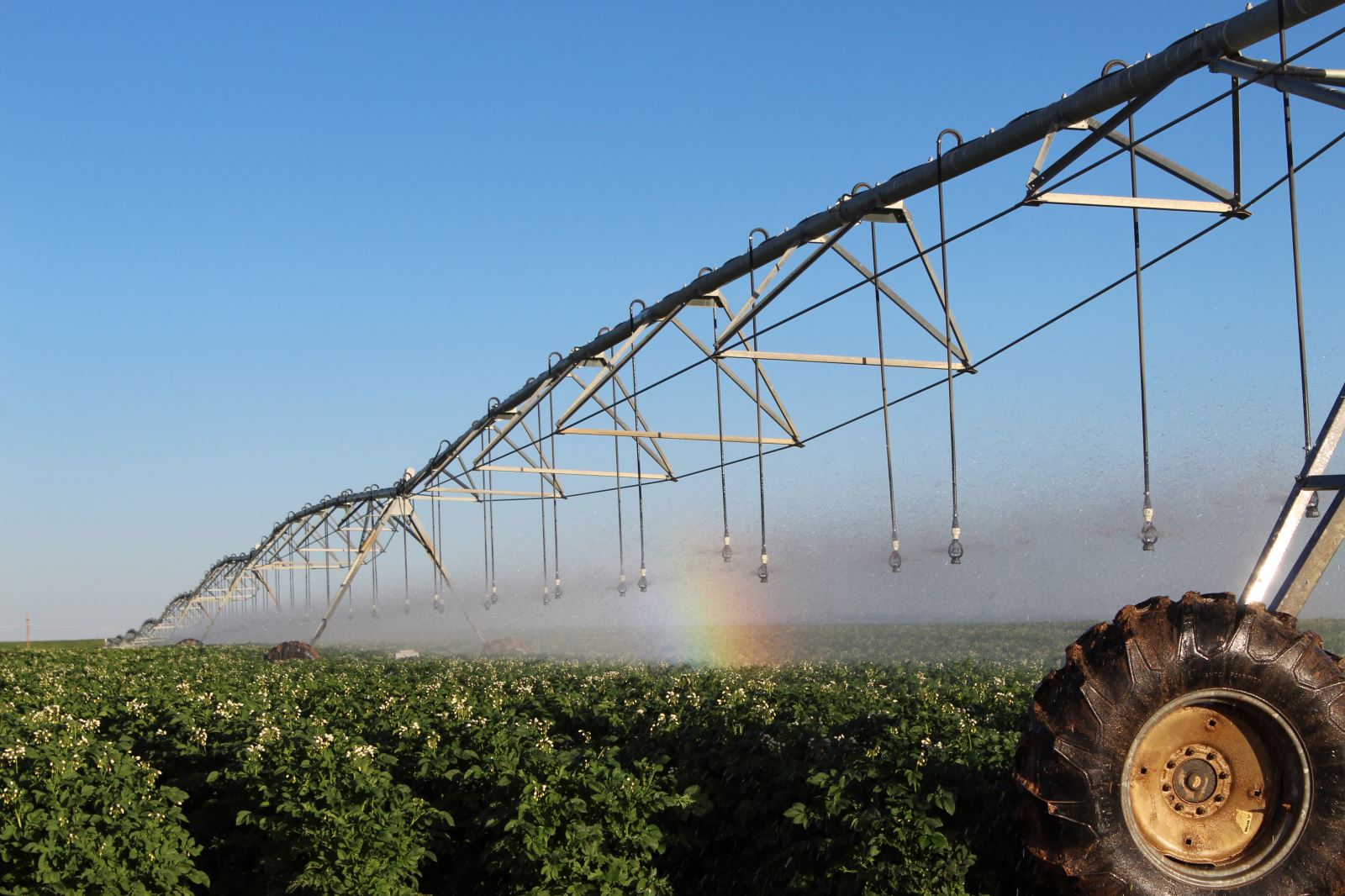Over-application of fertiliser nutrients can cause growth and quality problems in vegetable crops.
Irrigation water can supply a significant proportion of the nutrients required by a crop, particularly nitrogen, and these nutrients should be accounted for in your overall fertiliser program.
To do this, you need to know the concentration of nutrients in your irrigation water and how much water you are applying.
Introduction
Over-application of fertiliser nutrients can cause growth and quality problems in vegetable crops.
For example, surplus application of nitrogen can lead to excessive top growth and quality problems in many vegetable crops including carrots, potatoes, lettuce and brassicas.
Nutrients added to the crop from irrigation water should be accounted for in your overall fertiliser program.
Water from bores or dams used to irrigate crops is not pure. As well as common salt (sodium chloride), irrigation water often contains nutrients essential to plant growth such as calcium, magnesium, nitrogen, potassium and sometimes phosphorus. If the concentration of these nutrients and the amount of water applied are high, significant quantities of nutrient can be applied to a crop when irrigating.
Quantity of nutrients applied
The amount of nutrient applied from irrigation water can be calculated. To do this, analyse the water supply to determine the concentration of nutrients in the irrigation water. The amount of irrigation water to be applied to the crop should also be determined.
A quick calculation of nutrients applied from irrigation water can be determined from Table 1.
Rate of water applied and sampling

To find out how much irrigation water is applied daily or weekly by your system, either use reliable sprinkler data or measure output with rain gauges.
When collecting a water sample for nutrient analysis, allow the irrigation system to operate for five minutes and then rinse a clean plastic bottle or jar and its lid with the irrigation water.
After emptying the rinse water, collect a 100 to 200mL water sample from the sprinklers and place the lid tightly on the container. Don’t completely fill the container as it may need to be frozen before analysis. The water sample should be forwarded promptly to a laboratory for analysis.
After sample analysis, you will receive a sheet of results. The results listed should include:
- total nitrogen (total-N)
- nitrate-nitrogen (NO3-N) and ammonium-nitrogen (NH4-N)
- phosphorus (P)
- potassium (K)
- sulphur (S)
- calcium (Ca)
- magnesium (Mg).
To determine the concentration of nutrient in the sample, the total value should be used. However, if nitrogen analysis is only expressed as nitrate, divide the number by 4.5 to get the nitrate-nitrogen concentration. For example, 45mg/L nitrate equals 10mg/L nitrate-nitrogen.
Nutrient applied
As an example, the total nitrogen applied to a vegetable crop from irrigation water is 14kg/ha/week if 10mm of irrigation water with a nitrogen concentration of 20mg/L is applied every day for a week (that is, 70mm of irrigation water per week). This figure is shown in bold in Table 1.
| Water applied(mm) | 1 | 5 | 10 | 15 | 20 | 25 | 30 |
|---|---|---|---|---|---|---|---|
| 1 | 0.01 | 0.05 | 0.10 | 0.15 | 0.20 | 0.25 | 0.30 |
| 5 | 0.05 | 0.25 | 0.50 | 0.75 | 1.00 | 1.25 | 1.50 |
| 10 | 0.10 | 0.50 | 1.00 | 1.50 | 2.00 | 2.50 | 3.00 |
| 15 | 0.15 | 0.75 | 1.50 | 2.25 | 3.00 | 3.75 | 4.50 |
| 20 | 0.20 | 1.00 | 2.00 | 3.00 | 4.00 | 5.00 | 6.00 |
| 25 | 0.25 | 1.25 | 2.50 | 3.75 | 5.00 | 6.25 | 7.50 |
| 30 | 0.30 | 1.50 | 3.00 | 4.50 | 6.00 | 7.50 | 9.00 |
| 35 | 0.35 | 1.75 | 3.50 | 5.25 | 7.00 | 8.75 | 10.50 |
| 40 | 0.40 | 2.00 | 4.00 | 6.00 | 8.00 | 10.00 | 12.00 |
| 45 | 0.45 | 2.02 | 4.50 | 6.75 | 9.00 | 11.25 | 13.50 |
| 50 | 0.50 | 2.50 | 5.00 | 7.50 | 10.00 | 12.50 | 15.00 |
| 55 | 0.55 | 2.75 | 5.50 | 8.25 | 11.00 | 13.75 | 16.50 |
| 60 | 0.60 | 3.00 | 6.00 | 9.00 | 12.00 | 15.00 | 18.00 |
| 65 | 0.65 | 3.25 | 6.50 | 9.75 | 13.00 | 16.25 | 19.50 |
| 70 | 0.70 | 3.50 | 7.00 | 10.50 | 14.00 | 17.50 | 21.00 |
Note: Milligrams per litre (mg/L) equals parts per million (ppm).
For a 10-week crop, the total amount of nitrogen applied from the irrigation water will be 140kg/ha. The rate of fertiliser nitrogen applied to the crop should be reduced by the amount calculated for the life of the crop (in the example, 140kg N/ha).


